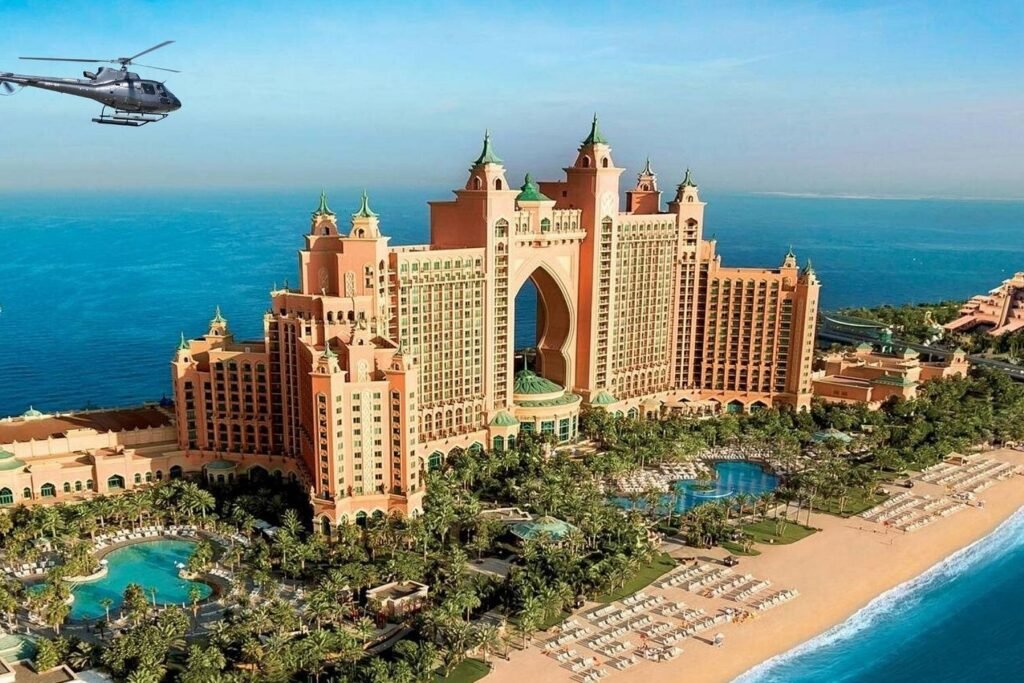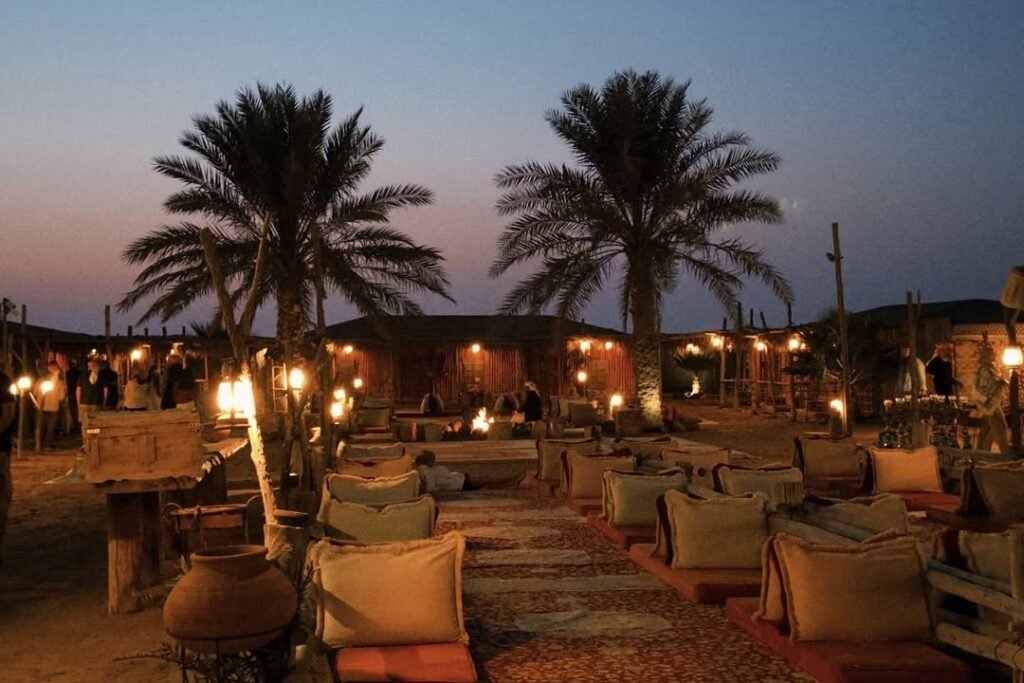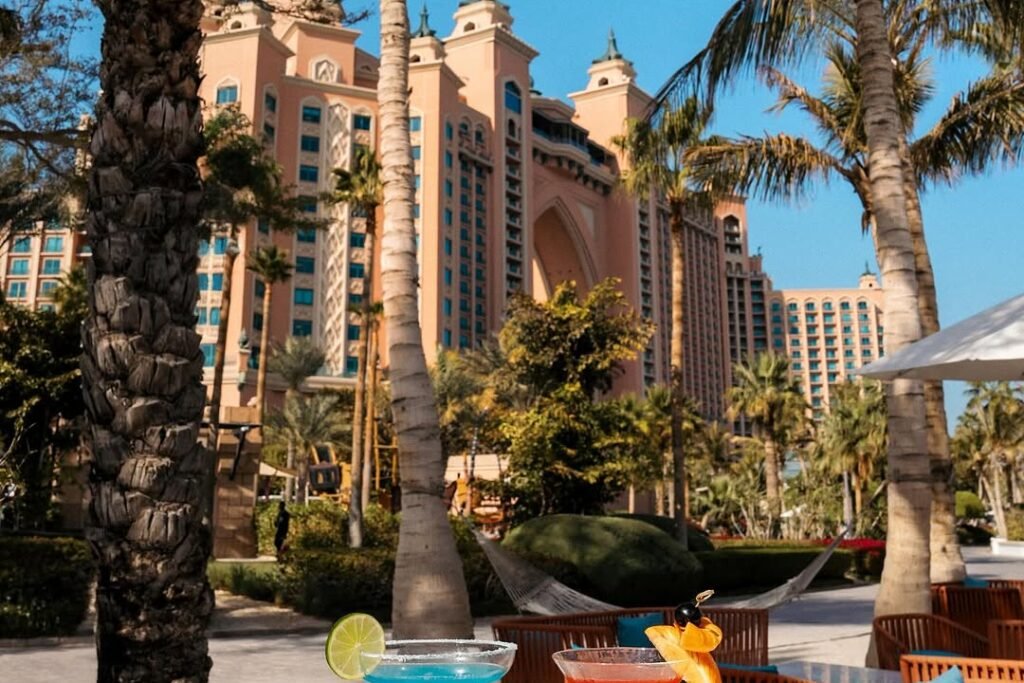Dubai has changed a lot in the last few decades, becoming a modern and stylish city. While it values its traditions and history, the city is mostly known for its recent developments like tall glass skyscrapers, man-made islands, and new neighborhoods with canals and harbors. This shows how Dubai has embraced a modern approach.
Not only has the city’s architecture and infrastructure evolved, but its contemporary art and culture scene have also added vibrancy to public life. Dubai has become a top destination for artists from the Middle East because it offers a cool and exciting lifestyle along with cultural attractions. Let’s explore the hotspots of this young cultural scene.
Discover Art In Dubai:
Table of Contents
1. Alserkal Avenue: The center of the young cultural scene
![Discover Art In Dubai: 6 Best Contemporary Art Spots [2025 Updated] 6 Art In Dubai](https://artandthensome.com/wp-content/uploads/2023/05/file7ngwjeggn35q0ajv8z7-1161049-1668280501.jpg)
The center of Dubai’s modern art scene is inconspicuous and unspectacular in the industrial district of Al Quoz. It all started in 2007 when Emirati businessman Abdelmonem Bin Eisa Alserkal decided to gradually rent 39 warehouses on a block to artists and creative people. A year later, the Ayyam Gallery, the first art gallery, moved into the industrial complex.
This is how Alserkal Avenue came into being, an entire street in which contemporary art galleries, non-profit organizations, foundations, private collections, community projects, and restaurants are gathered on more than 46,000 square meters. The site is now home to 60 cultural institutions and with 25 on-site art galleries, Alserkal Avenue holds the record for the highest density of art galleries in the region.
Galleries, theaters, designers & Co.: modern art and more
![Discover Art In Dubai: 6 Best Contemporary Art Spots [2025 Updated] 7 Art In Dubai](https://artandthensome.com/wp-content/uploads/2023/05/unnamed-1-1024x678.jpg)
There is an incredible amount to see on a tour of the “Avenue”. Modern installations in Carbon12, bizarre sculptures in the Custot Gallery Dubai, design and lighting objects in Svenm or the performance and dance theater The Junction are just a few examples of how diverse and creative life in the art district is. Some culinary concepts can also be found in the “art block”, such as the chocolate manufacturer Mirzam Chocolate Makers, the organic restaurant Appetite, or Project Chaiwala, which is dedicated to the art of Indian tea and offers delicious street food.
In 2017, Alserkal Avenue got an extraordinary “main building”. A multifunctional exhibition hall with movable walls, double ceiling heights, and a translucent facade has been created under the name Concrete. On a tour of Alserkal Avenue, you will encounter a wide variety of concepts and creative artists that make a visit inspiring, tasty, and entertaining.
2. Cinema Akil: The first arthouse cinema in Dubai
![Discover Art In Dubai: 6 Best Contemporary Art Spots [2025 Updated] 8 Cinema Akil In Dubai Art In Dubai](https://artandthensome.com/wp-content/uploads/2023/05/Cinema-Akil5-1024x749.jpg)
The cinema landscape in Dubai is large. From huge multiplex halls to luxury variants with business-class leather seats to dine-in concepts, film fans will get their money’s worth. However, no cinema is as romantic, likable, and unique as Cinema Akil. As part of Alserkal Avenue, it is the first art house cinema in Dubai to show international art house films. The cinema consists of only one hall with around 130 seats, but this offers a somewhat different film experience.
In the converted warehouse, visitors take a seat on plush sofas and discarded benches from Dubai’s oldest cinema. Red and gold wallpaper and heavy velvet curtains hang on the walls, and the aforementioned Project Chaiwala provides tea and snacks for movie buffs. In addition to current productions from all over the world, the cinema always shows classics from film history, and there are also discussions with directors, actors, film scholars, and fans.
3. Dubai Opera: The slightly different opera house
![Discover Art In Dubai: 6 Best Contemporary Art Spots [2025 Updated] 9 Art In Dubai Dubai Opera](https://artandthensome.com/wp-content/uploads/2023/05/dubai-opera-1024x454.webp)
Concerts, theatre, dance, comedy, and much more: The Dubai Opera is not an opera house in the traditional sense, but rather a venue for cultural events of all kinds. Built in a prominent location close to the Burj Khalifa in downtown Dubai, the ultra-modern culture house presents itself with Space for 2,000 guests as a versatile all-rounder. Because: The design of the house is constructed so flexibly that it offers the right ambiance for three different types of events. It can be transformed from a concert hall into a theater hall and a banquet hall for meetings or conferences. Architecturally, the building is based on an Arabian dhow.
Not only the interior but also the foyer impresses with its optics and acoustics. Even if no events are taking place, those interested can look around the opera during the day or book a guided tour through the backstage area. Taking the escalator to the top offers a great view of the Burj Khalifa and the Dubai Fountains, and guests can also look directly at the five-meter-long chandelier called “Symphony” with its 30,000 glass beads.
4. Art at Dubai Creek: The Jameel Arts Centre
![Discover Art In Dubai: 6 Best Contemporary Art Spots [2025 Updated] 10 The Jameel Arts Centre In Dubai](https://artandthensome.com/wp-content/uploads/2023/05/Rory-Gardiner_02-1024x465.jpg)
The Dubai Creek is closely linked to the history of the city. The historic districts of Bur Dubai and Deira in particular bear witness to the city’s traditions. Here are many museums that trace the history and culture of Dubai. Another museum has recently opened right on the estuary, but further south on the artificially created island of the Jaddaf Waterfront. The Jameel Arts Center is a refreshing new exhibition space that excitingly presents modern and contemporary art.
As an independent institution, it particularly supports artists from the Arab world and gives them enough space for installations, collages, video art, events, and a library for research. The site is extensive, with garden courtyards between colonnades and space for a sculpture park on the banks of the creek. Perfect for getting new inspiration. Best of all: Admission is free.
5. A designer district of its own: The Dubai Design District (d3)
![Discover Art In Dubai: 6 Best Contemporary Art Spots [2025 Updated] 11 Art In Dubai Art Installation In The Dubai Design District](https://artandthensome.com/wp-content/uploads/2023/05/homepage-pushing-desktop-img1-970x1024.jpg)
Do you like fashion, extravagant interiors, and creative food concepts? Then you should check out the Dubai Design District (d3). A lively place full of creativity and ideas has emerged between Dubai Creek and downtown. The quarter is a hotspot for (furniture) designers, fashion labels, artists, architects, beauticians as well as IT and marketing specialists. The range of galleries, showrooms for fashion and furniture, co-working spaces, and gastronomic facilities is correspondingly high and varied.
Even a fitness studio has settled here. And with The Block, there is a modern and well-equipped outdoor playground with sports facilities such as a basketball court and a skate park. Stroll through the many shops and enjoy wholesome and healthy meals in the trendy local restaurants and cafes.
6. Modern art in public space
![Discover Art In Dubai: 6 Best Contemporary Art Spots [2025 Updated] 12 Art In Dubai](https://artandthensome.com/wp-content/uploads/2023/05/download-5-1024x576.jpg)
Not only museums, opera houses, or galleries show art. Visitors to Dubai can also find diverse and worthwhile works of art in public spaces. From sculptures on sidewalks to street art on house facades to artistically designed metro stations or idiosyncratic architecture, the city’s public spaces are increasingly being targeted by modern and creative artists.
Street art is very trendy in Dubai. It can look trendy, colorful, animalistic, and a bit crazy. They can now be found in many places in the metropolis. Next to the La Mer and City Walk districts 18b Street in Karama is decorated on both sides with a total of 24 murals. Modern graffiti has also been painted on the walls of houses on 2nd December Street, where motifs that charmingly depict Arabic tradition are more in the foreground.
In addition to the gigantic construction projects in Dubai, there are also smaller architectural highlights that make a positive impression when walking through the city. For example, the Twisted Bridge stretches across the Dubai Canal and inspires with its futuristic design. The 170-meter-long pedestrian bridge with its aluminum frame winds around the bridge frame like a kaleidoscope and thus resembles a helix screwed twice: the perfect illusion!
The artistic design of the underground stations is just as popular – as in many other large cities. The underground Bur Juman station, an important transport hub in the town, also scores with this. Passengers encounter an unusual construction when riding on the escalator. Across either side of the platform are four huge jellyfish-sized glass chandeliers. From the screen to the long, teardrop-shaped tentacles, LEDs not only illuminate the body of the jellyfish, but even the colors change from soft and deep blue tones to rich violet. Worth seeing!






